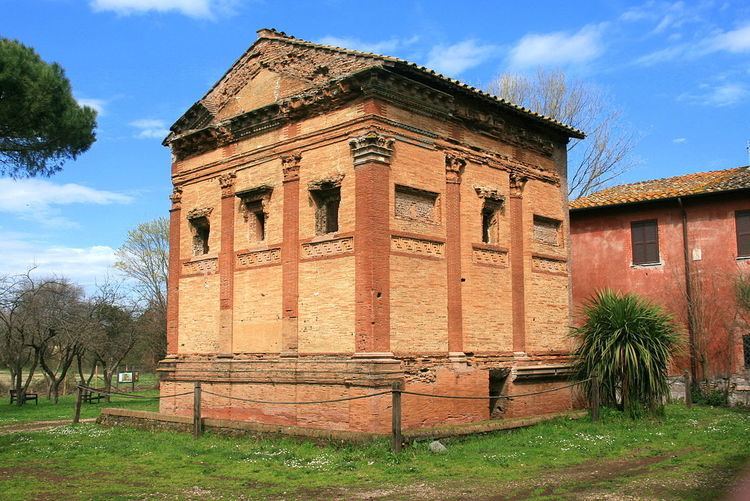Phone +39 06 0608 | ||
 | ||
Hours Open today · Open 24 hoursThursdayOpen 24 hoursFridayOpen 24 hoursSaturdayOpen 24 hoursSundayOpen 24 hoursMondayOpen 24 hoursTuesdayOpen 24 hoursWednesdayOpen 24 hoursSuggest an edit Similar Appian Way Regional, Colli Albani, Campitelli, Parco degli Acquedotti, Arco di Travertino Profiles | ||
The Caffarella Park (Italian: Parco della Caffarella) is a large park in Rome, Italy, protected from development. It is part of the Parco Regionale Appia Antica (Appian Way Regional Park). The park is contained in the Caffarella Valley and is bordered on its northern side by the Via Latina and on its southern by the Appian Way. It extends lengthways from the Aurelian Wall up to the Via dell'Almone. It contains several items of archaeological interest, as well as a working farm, and has considerable ecological value, with 78 species of birds and fauna.
Contents
History
In Roman times much of the area was occupied by a large estate known as the Triopius. Herodes Atticus was a Greek who became a Roman senator. Through his marriage to Annia Regilla he acquired the land of the estate that stretched from the Caffarella Park to the Appian Way. Two ruins in the park date from that time, the tomb of Annia Regilla and the Nympheum of Egeria. Several towers in the park are medieval and served mainly as watch towers.
The name of the park comes from the Caffarelli family, which operated a farm in the area in the 16th Century. It was subsequently owned by the Pallavicini family and the Torlonias. In the mid-20th Century the area was in major danger of being used for urban expansion but was protected and then incorporated into the Appian Way park, following popular campaigns for its preservation.
